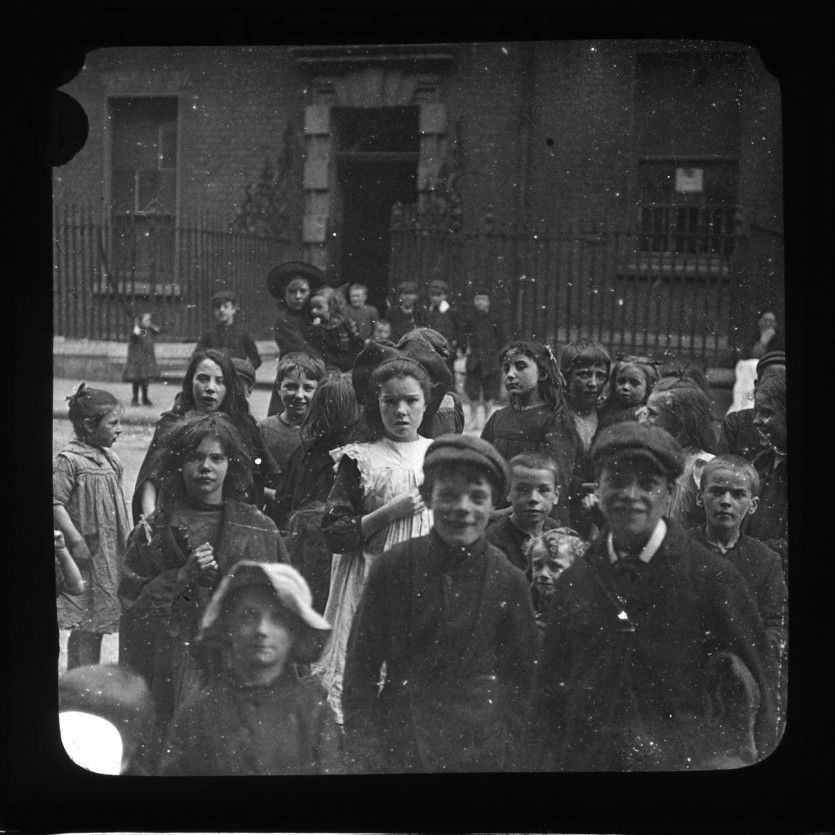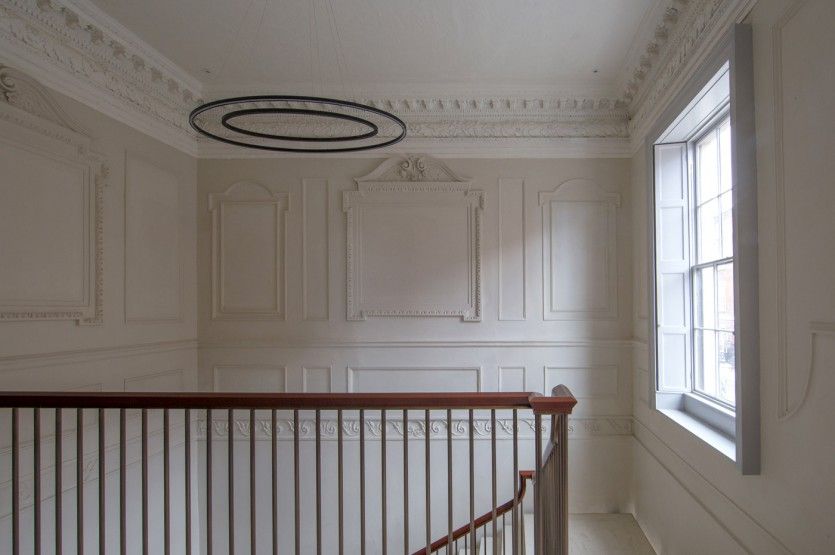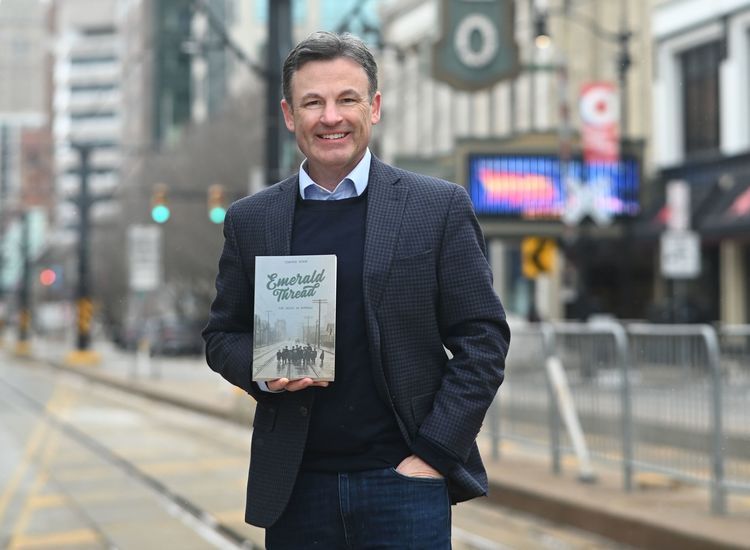I recently visited the museum at 14 Henrietta St., Dublin, and was astounded by the fascinating history of this building. I have visited historic homes around the world that preserve the feeling of a bygone era, but I have never visited any home that preserve the memories of so many different eras and so many different social classes. If you want to truly grasp the last 300 years of Dublin history there is no better place to visit than this superb museum. Amazingly, this house was once home to Dublin’s elite, but later it was home to some of the city’s most destitute citizens and the museum expertly tells the stories of all the residents, rich and poor, who once lived here.
Elegant Georgian houses characterize much of Dublin and No. 14 is a prime example of Georgian Dublin. Henrietta Street was named for Henrietta, Duchess of Grafton, whose husband was Lord Lieutenant of Ireland in 1720 when the first houses appeared on the street. Irish real estate developer Luke Gardiner built three elegant Georgian homes on the street in the 1840s including No. 14.
Henrietta Street soon became the city’s most exclusive address in the days when Dublin boasted of being “the second city of the British empire.” Henrietta Street also prided itself on its good air, set high upon a hill, far away from the noxious odors of the tanneries, slaughterhouses, and fetid industries across the River Liffey to the south. It was also a safe distance from the city’s disease infested streets across the river.
The first family to occupy the home was the Molesworths: Viscount General Richard Molesworth of Swords and his second wife Mary. Molesworth had a distinguished military career and led his regiments at the battles of Blenheim (1704) and Ramillies (1706) during the War of the Spanish Succession. He was appointed Commander-in-Chief of the Royal Irish Army in 1751. The family’s “city home” was richly decorated to reflect the Molesworth’s wealth, status and taste. The first-floor level, housed the piano nobile (or noble floor), the formal public reception rooms. A drawing room to the front is where the Lord or Lady would host visitors, along with the dining room to the back. The dressing room or bed chamber for the lady of the house, and a closet were also on this floor. Family bedrooms were located on the floor above the piano nobile, and the servants quarters were located in the attic. A second back stairs would have provided access to all floor levels for family and servants alike. Other early residents were also from the Dublin elite. In its first thirty years, Henrietta Street was home to six titled residents, two army generals, three archbishops, two speakers of the House of Commons and the Lord Chancellor of Ireland.
In 1800, Dublin witnessed the start of a dramatic decline. The independent Irish Parliament was abolished and absorbed into the British Parliament. Many of Dublin’s most influential politicians and members of the elite left the city and their Dublin homes for London. Dublin and Ireland entered a period of economic decline, exacerbated by the return of soldiers and sailors from the Napoleonic Wars.
This era also marked a turning point for Henrietta Street. No. 14 no longer served as the home of Dublin’s elite. Between 1800 and 1850 14 Henrietta St. became a legal center. The house at No. 14 was occupied by Peter Warren, solicitor, and John Moore, Proctor of the Prerogative Court. From 1850-1860 the house was the headquarters of the newly established Encumbered Estates’ Court which allowed the State to acquire and sell on insolvent estates after the Great Hunger. In the 19th century the home’s fine decoration and lavish furniture were replaced by more commonplace desks, quills, and paperwork of commissioners, barristers, lawyers, and clerks who moved into the house.
After the Great Hunger, impoverished people from the countryside streamed into Dublin, swelling the population, and causing an extreme shortage of housing for the poor. In 1876, Thomas Vance, a real estate speculator from Blackrock, Co. Dublin, bought number 14 Henrietta St. hoping to cash in by turning it into a tenement with 14 flats. He removed the marble chimneys and mahogany doors of the grand Georgian period and sold them at auction. He also removed the grand staircase to fit in more rooms, and the former servants stairs became the communal staircase. He installed two toilets.

Children on a street in an inner-city tenement district in Dublin in the early 20th century.
Other once elegant homes on the street also became tenements and Henrietta Street’s population soared. An astonishing 835 people lived in 15 houses on the street. Seventeen families would call No. 14 home and more than 100 souls were cramped into a house that was once home to a single family, but Henrietta Street was not unique in its poverty. Nearly 26,000 families lived in such inner-city tenements, and 20,000 of these families lived in just one room. Such Dublin inner-city tenements were filthy, overcrowded, disease-ridden and teemed with malnourished children, a third of whom did not reach adulthood. The rank odors of such tenements would turn a person’s stomach. Residents of No. 14 had to bring their waste out in a bucket and fought with rats and other vermin. The stench of cooking, unwashed bodies and turf fires permeated such tenements.
Amazingly, people lived in such squalor until 1979 when the last resident left No. 14. The building was in such bad repair that it was in danger of collapse. The basement and third (attic) floor had long before becoming uninhabitable. Rafter ends, floor joist ends and window heads rotted, decorative plasterwork was lost, and vandalism all threatened the house’s collapse and some on the Dublin Council called for the historic building’s demolition, but a group of local activists protected No. 14. By the late 1990s, the house faced major structural failure, decay, and dry rot. The back staircase was unfit for use, as was the basement flight, preventing access beyond the ground floor level. Treads had worn away and all but seven balusters had been entirely removed from the stairs.
In 2008, the Dublin City Council announced a renovation of the house. The Irish conservation specialists Shaffrey Architects were commissioned to completely restore the house in three phases over a 10-year period. The five million Euro conservation project employed an array of expert craftspeople in stone repairs, wallpaper conservation, linoleum reproduction, joinery, historic paint and surface finishes, specialist decorative plasterwork, and repairs to mid-to-late 20th century tiled fireplaces.
In 2014, Dublin City Council announced that No. 14 Henrietta St. would become a museum to explore tenement life in the city and to recount the social, cultural, and architectural history of the home. Many former residents of the home were still alive and museum staff sought their input in how to tell the story of the building. These former residents have been directly involved in creating the house’s exhibition and many of their memories now feature in the excellent guided tours. The former residents have also donated artifacts, helped furnish and decorate certain rooms, and served in museum advisory groups both before and after the opening. Replicas of the possessions of Mrs. Dowling, who lived there during the mid-20th century, are arranged about the place: wartime soap, army coats crumpled atop the beds as blankets, along with her own abandoned dolls. The stories and artifacts make the home’s history come alive.
The museum does a superb job of telling the many different stories of its residents across 300 years of Dublin history. I left the museum with a far deeper appreciation of Dublin history and of the lives of its poorest citizens. If you want to gain a unique insight into the history of Dublin and its citizens, then there is no better place than the museum at No. 14 Henrietta St.
For more about the museum, visit here.









